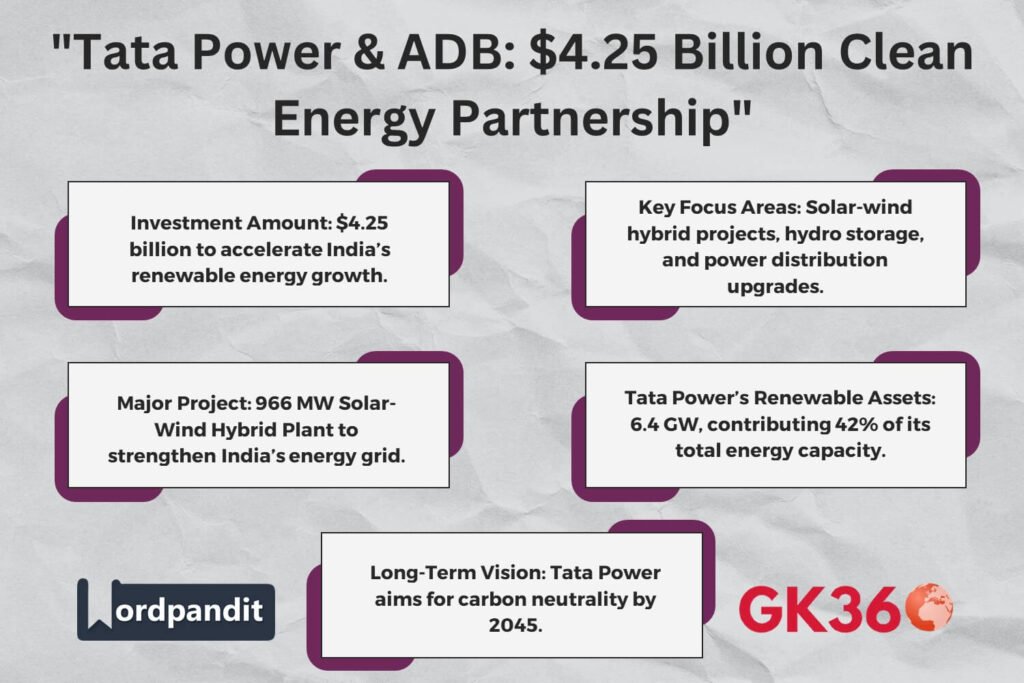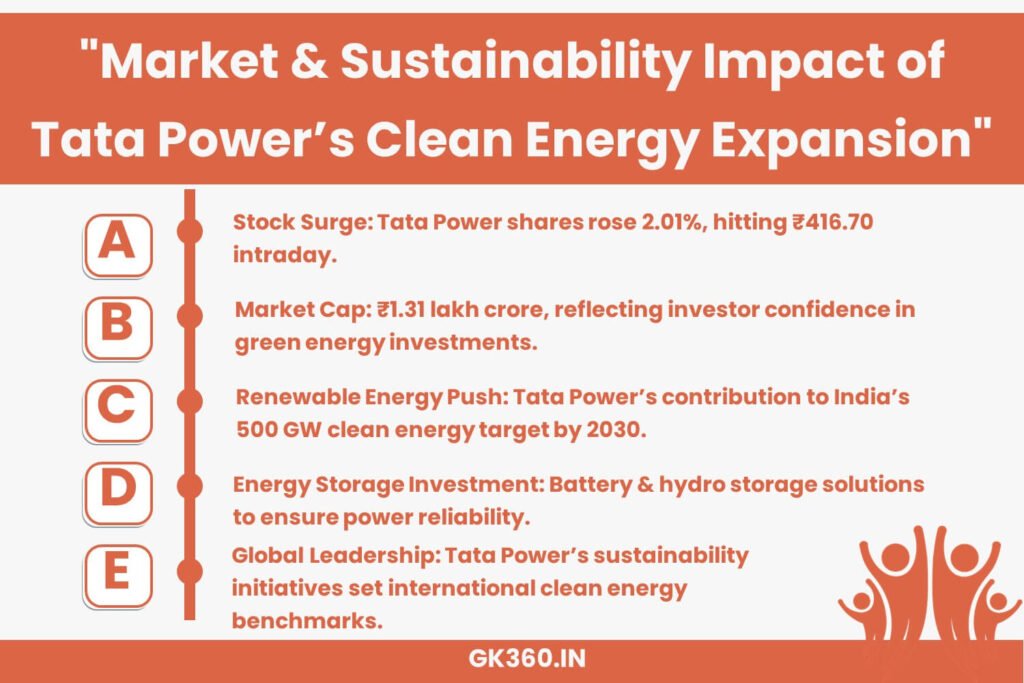Tata Power and ADB Sign $4.25 Billion MoU to Drive Clean Energy in India
Introduction
In a landmark development for India’s renewable energy sector, Tata Power has signed a Memorandum of Understanding (MoU) with the Asian Development Bank (ADB). The agreement, valued at $4.25 billion, aims to finance a wide array of clean energy initiatives, strengthening India’s power infrastructure and supporting the nation’s renewable energy goals. This collaboration is particularly focused on large-scale solar-wind hybrid projects, pumped hydro storage systems, and power distribution upgrades.

Table of Contents
- Key Highlights of the MoU
- Tata Power’s Commitment to Renewable Energy
- Leadership in Clean Energy: A Proven Track Record
- Positive Impact on the Market
- Driving Clean Energy Goals
- FAQs
- Conclusion
Tata Power and ADB Sign $4.25 Billion MoU to Drive Clean Energy in India
Introduction
In a landmark development for India’s renewable energy sector, Tata Power has signed a Memorandum of Understanding (MoU) with the Asian Development Bank (ADB). The agreement, valued at $4.25 billion, aims to finance a wide array of clean energy initiatives, strengthening India’s power infrastructure and supporting the nation’s renewable energy goals. This collaboration is particularly focused on large-scale solar-wind hybrid projects, pumped hydro storage systems, and power distribution upgrades.
Table of Contents
- Key Highlights of the MoU
- Tata Power’s Commitment to Renewable Energy
- Leadership in Clean Energy: A Proven Track Record
- Positive Impact on the Market
- Driving Clean Energy Goals
- FAQs
- Conclusion
Positive Impact on the Market
Investor Confidence
- The MoU announcement has boosted investor sentiment, with Tata Power’s market capitalization reaching ₹1.31 lakh crore.
- The company’s commitment to renewable energy has solidified its position as a dominant player in India’s energy sector.
Stock Market Performance
- Share Price Growth: Following the MoU announcement, Tata Power’s stock rose by 2.01%, reaching an intraday high of ₹416.70.
- Market Optimism: The positive movement reflects investor confidence in Tata Power’s ability to deliver on clean energy commitments.
Driving Clean Energy Goals
Expanding Renewable Capacity
- Scaling Infrastructure: Tata Power is investing in large-scale solar, wind, and hydro projects.
- Energy Storage Solutions: The company is enhancing battery and hydro storage facilities to ensure reliable and efficient power distribution.
Global Sustainability Influence
- International Partnerships: Tata Power collaborates with global institutions to drive sustainability initiatives.
- Industry Leadership: The company is setting global benchmarks in clean energy and environmental responsibility.

FAQs
- What is the primary goal of the MoU between Tata Power and ADB?
The MoU aims to finance clean energy projects, focusing on solar-wind hybrid projects, hydro storage, and power distribution upgrades. - How will this agreement impact India’s renewable energy goals?
This collaboration supports India’s target of 500 GW renewable energy by 2030, ensuring sustainable and reliable power supply. - What specific projects will be funded under this MoU?
The MoU includes a 966 MW Solar-Wind Hybrid Project, battery storage, hydro storage solutions, and power distribution enhancements. - How has Tata Power’s market responded to this announcement?
Tata Power’s stock rose by 2.01%, reaching an intraday high of ₹416.70, reflecting strong investor confidence. - What is Tata Power’s long-term vision for clean energy?
Tata Power aims to achieve carbon neutrality by 2045, expanding its renewable energy portfolio and leading India’s clean energy transition.
Conclusion
The $4.25 billion MoU between Tata Power and ADB marks a significant milestone in India’s renewable energy transition. By investing in solar-wind hybrid projects, hydro storage systems, and power infrastructure modernization, Tata Power is driving sustainable growth and energy security.
Tata Power’s leadership in clean energy, supported by strategic partnerships and a robust expansion plan, positions it as a key force in India’s journey toward a green energy future. With a strong market performance, ambitious sustainability goals, and global collaborations, Tata Power is set to shape the future of India’s renewable energy landscape.
Key Takeaways
| Key Factor | Details |
|---|---|
| Investment Amount | $4.25 billion to accelerate India’s renewable energy growth. |
| Main Focus | Solar-wind hybrid projects, hydro storage, and power distribution upgrades. |
| Key Project | 966 MW Solar-Wind Hybrid Plant to enhance India’s energy grid stability. |
| Tata Power Renewable Assets | 6.4 GW, contributing 42% of the company’s total capacity. |
| Net Zero Target | Tata Power aims to achieve carbon neutrality by 2045. |
Relative Terms
- Alt Text: “Tata Power partners with ADB for a $4.25 billion clean energy investment in India.”
- Image Title: “Tata Power & ADB: $4.25 Billion Renewable Energy Partnership”
- Description: “Tata Power signs a $4.25 billion MoU with ADB to invest in renewable energy, focusing on solar-wind hybrid, battery storage, and modernized power infrastructure.”
- SEO Keywords: “Tata Power ADB MoU, clean energy India, renewable energy investment, solar-wind hybrid projects, battery storage, carbon neutrality 2045, sustainable power India, Tata Power stock performance, power distribution upgrades”





